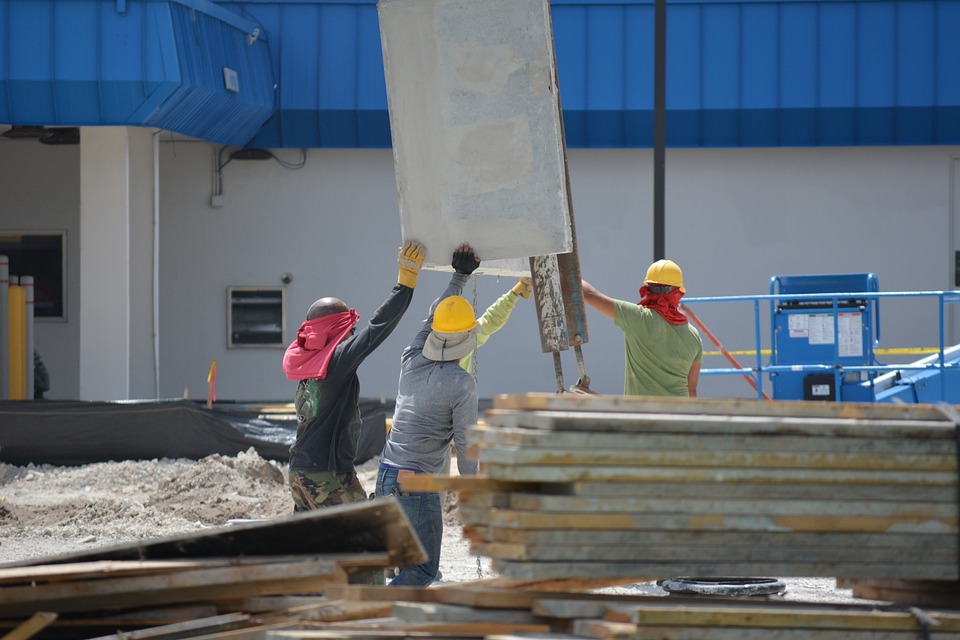Construction activity rose at fastest rate for nine months in February

February’s construction Purchasing Managers’ Index (PMI) joined its services and manufacturing counterparts in signalling stronger activity in February following two months of decline.
The rate of growth was the strongest since May 2022, supported by a marked rebound in commercial work and a positive contribution from civil engineering activity. In contrast, housing activity decreased for the third month running.
At the same time, the latest survey pointed to the least widespread supplier delays since January 2020 and a slowdown in input cost inflation. The overall rate of purchase price inflation was the lowest for 27 months in February.
The headline seasonally adjusted S&P Global / CIPS UK Construction PMI – which measures month-on-month changes in total industry activity – registered 54.6 in February, up from 48.4 in January and above the neutral 50.0 threshold for the first time in three months. The latest reading was the highest since May 2022.
Commercial construction was the best-performing area in February (index at 55.3), with the rate of expansion the steepest for nine months. Civil engineering activity also returned to growth in February (index at 52.3), although the rate of expansion was only modest.
Construction companies noted a fall in residential building work for the third consecutive month in February (index at 47.4). The speed of the downturn eased since January, however. Survey respondents commented on subdued market conditions due to elevated interest rates, alongside cutbacks to new house building projects in anticipation of weaker demand.
Total new work picked up in February, as signalled by an improvement in order books for the first time since November 2022. Construction companies reported signs of a turnaround in demand for commercial projects due to the improving near-term economic outlook.
Forthcoming project starts contributed to a modest upturn in purchasing activity during February. Despite rising demand for construction products and materials, the latest survey indicated that supply pressures continued to ease. The respective index signalled that delays with vendor delivery times were the least widespread for just over three years.
A better alignment of demand and supply helped to bring down input price inflation across the construction sector in February. The latest round of purchase price increases was the slowest since November 2020. Higher input costs were mostly linked to suppliers passing on rising energy bills and salary inflation, although this was offset by lower transportation bills.
Business expectations for the year ahead improved further from the 31-month low seen in December 2022. Around 46% of the survey panel anticipate a rise in construction activity over the year ahead, while only 13% predict a decline. The resulting index pointed to the highest level of optimism for one year. Construction firms often noted signs of a recovery in client demand, despite elevated interest rates and recession risks.
Finally, the latest data indicated a modest increase in employment numbers across the construction sector. However, efforts to cut costs continued to hold back staff recruitment, according to the survey respondents
As a relatively cyclical sector, construction firms could be among the first to benefit from the economic recovery that the EY ITEM Club expects to become embedded later this year.
Martin Beck, chief economic advisor to the EY ITEM Club, said: “Following a rebound in the services and manufacturing PMIs in February, the construction PMI followed suit, rising to 54.6 from 48.4 in January. This was the first reading in expansionary, 50+ territory in three months and the highest since May 2022. Combined with other upbeat indicators from the retail sector, consumer confidence and tax receipts, the latest PMIs suggest the risk of recession is easing.
“Construction activity was buoyed by signs of an improving economic outlook, a fall in supplier delays and a further easing in input price inflation, but whether the sector can continue February’s revival in activity is debatable. The downturn in the housing market is likely to persist, given relatively high mortgage rates, a weak economy and the closure of the Help to Buy scheme at the end of this month. A watering down of what had been mandatory targets set by the government for house building presents another obstacle. Higher interest rates are also impacting construction firms’ balance sheets and a poor environment for business investment will likely drag on commercial projects.
“That said, optimism among firms in the latest S&P Global/CIPS survey was at a 12-month high. What is a comparatively energy-intensive sector will likely benefit disproportionately from the recent substantial fall in wholesale energy prices. As a relatively cyclical industry, construction could be among the first to benefit from the economic recovery the EY ITEM Club expects to become embedded as 2023 proceeds.”
SCAPE chief executive Mark Robinson said next week’s Budget is only going to increase pressure on local authorities to deliver cost savings, as they are also challenged to deliver the regeneration projects that will boost the economy.
Mr Robinson said: “While it’s encouraging to see construction activity pick up again after a sharp decrease in January, unpredictable new business pipelines remain an operational challenge for firms to manage effectively.
“Recent news that government departments collectively spent £24bn less than forecasted might raise hopes of a last-minute public sector spending spree by the Chancellor in next week’s Budget. However, it’s more likely that delivering real-term cost savings is going to be the mandate for local authorities, and contractors will play an important role in helping them to achieve this.
“Thorough planning and early engagement will therefore be crucial in continuing to deliver impactful regeneration projects that support the growth of regional economies.”

















